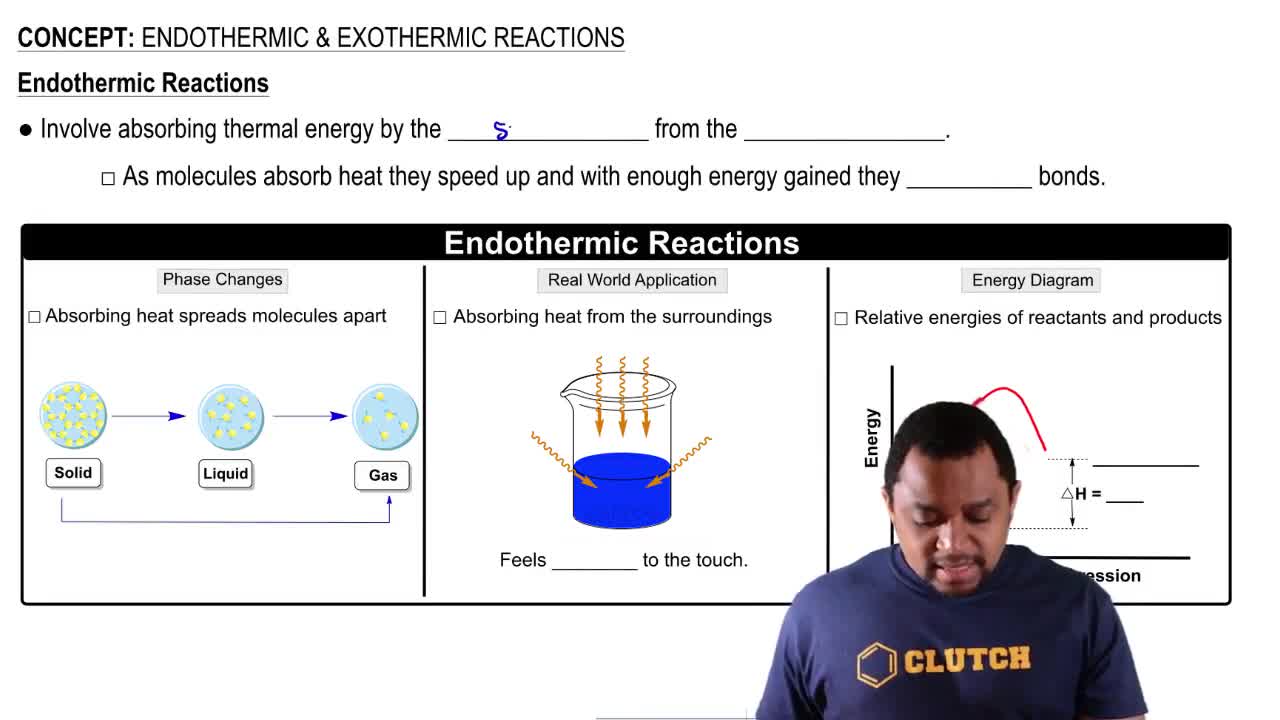Each reaction is allowed to come to equilibrium, and then the volume is changed as indicated. Predict the effect (shift right, shift left, or no effect) of the indicated volume change. a. CO(g) + H2O( g) ⇌ CO2(g) + H2(g) (volume is decreased)
This reaction is endothermic. C(s) + CO2(g) ⇌ 2 CO(g) Predict the effect (shift right, shift left, or no effect) of increasing and decreasing the reaction temperature. How does the value of the equilibrium constant depend on temperature?

Verified Solution
Key Concepts
Le Chatelier's Principle

Endothermic Reactions

Equilibrium Constant (K)

Each reaction is allowed to come to equilibrium, and then the volume is changed as indicated. Predict the effect (shift right, shift left, or no effect) of the indicated volume change. b. PCl3(g) + Cl2(g) ⇌ PCl5(g) (volume is increased)
Each reaction is allowed to come to equilibrium, and then the volume is changed as indicated. Predict the effect (shift right, shift left, or no effect) of the indicated volume change. c. CaCO3(s) ⇌ CaO(s) + CO2(g) (volume is increased)
Coal, which is primarily carbon, can be converted to natural gas, primarily CH4, by the exothermic reaction: C(s) + 2 H2(g) ⇌ CH4(g) Which disturbance will favor CH4 at equilibrium?
a. adding more C to the reaction mixture b. adding more H2 to the reaction mixture d. lowering the volume of the reaction mixture f. adding neon gas to the reaction mixture
Coal, which is primarily carbon, can be converted to natural gas, primarily CH4, by the exothermic reaction: C(s) + 2 H2(g) ⇌ CH4(g) Which disturbance will favor CH4 at equilibrium? c. raising the temperature of the reaction mixture
Coal, which is primarily carbon, can be converted to natural gas, primarily CH4, by the exothermic reaction: C(s) + 2 H2(g) ⇌ CH4(g) Which disturbance will favor CH4 at equilibrium? e. adding a catalyst to the reaction mixture
